How to Make Live Fish Transportation Sustainable
by: fast company, 2011-03-17 19:21:58 UTC

Novozymes, a biotechnology company that does everything from building better biofuels to removing trans fats in foods, has figured out how to sustainably transport large amounts of live fish across long distances.
The company's venture into live fish transportation came about as part of a partnership with Aqualife, a Danish cleantech logistics company that specializes in the global fishing industry. When a caviar production facility in Abu Dhabi asked Novozymes if it could transport 140 metric tons of live sturgeon from Germany, the company had a solution: move the fish by sea freight using specially designed Aqualife containers and Novozymes' microorganisms.
This is a departure from conventional methods of live fish transportation--for example, lobsters are transported by air freight at low temperatures--without water. "By
finding the right microorganisms that change some of the molecules in the
water into less harmful molecules, we can expand the period of time
where fish and marine animals can stay in the same water," explains Thomas Videbæk, Executive Vice President at Novozymes.
In this case, Novozymes selected a group of microorganisms that adjust the ammonia levels in water, lengthening the amount of time that sturgeon can stay in the same water without getting harmed by waste buildup. As a result, the company was able to perform the largest-scale transport of live fish ever, all while slashing 90% of CO2 emissions compared to conventional live fish transportation methods.
"It's good business for us, and at the same time we find better ways of
transporting food, keeping seafood fresh for extended periods of
time, and the environmental impact is significant," says Videbæk.
It is, of course, most sustainable to only eat locally produced food. But the global appetite for caviar and lobster isn't likely to decline any time soon. And Novozymes' microorganisms can lower the carbon footprint of transportation.
Follow Fast Company on Twitter. Ariel Schwartz can be reached by email.


 7th Generation Debuts 4x Laundry Detergent in Paper Bottle
7th Generation Debuts 4x Laundry Detergent in Paper Bottle
by: Greener Design, 2011-03-10 22:45:48 UTC
Seventh Generation is ditching completely-plastic packaging with the launch of its 4x concentrated formula.

 China, Malaysia Become Latest Nations to Ban BPA
China, Malaysia Become Latest Nations to Ban BPA
by: Chemistry, 2011-03-15 12:00:00 UTC
China and Malaysia have added to the list of countries setting bans on the estrogen-mimicking chemical bisphenol A.
 McDonald's: Want Sustainable Fries With That Shake?
McDonald's: Want Sustainable Fries With That Shake?
by: fast company, 2011-03-16 22:57:12 UTC
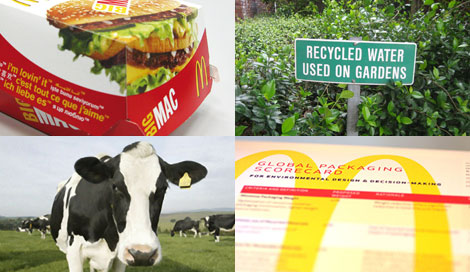
Most people who buy a Big Mac aren't concerned about where it came from--or whether the accompanying fries are made using sustainable palm oil. But apparently, McDonald's cares. The company recently announced its Sustainable Land Management Commitment, a pledge to work with suppliers that ensure agricultural raw materials and packaging come from sustainable sources. First up: beef, poultry, coffee, palm oil, and packaging.
McDonald's started looking at its supply chain impact in 2009. As part of a partnership with the World Wildlife Fund, the fast food chain invited in the nonprofit for an unfettered look at what McDonald's buys, how much it purchases, and who it buys from. The WWF performed a detailed analysis, and came up with the five categories listed above as a starting point. "This year is mostly about goals and targets," says Bob Langert, VP of Corporate Responsibility at McDonald's.
The top priority for McDonald's is cleaning up the beef supply chain. "Beef has its fair share of impacts on the world, and we have a role to play to reduce its impact. We have done a carbon footprint analysis, and beef rises to the top as the number one priority," says Langert. In concrete terms, that means keeping track of and reducing CO2 emissions from farms, as well as developing a program to trace and certify sustainable beef in the Amazon to make sure that no beef from deforested areas is used.
McDonald's next priority is the poultry supply chain, and more specifically, the impact of poultry feed on rainforest destruction. " The impacts of how animal feed like soya is grown and raised is almost equal to the impact of the animal itself," explains Langert. McDonald's has already committed to a moratorium on soya purchased from deforested areas in the Amazon. The company is still trying to figure out next steps.
Most of McDonald's goals are still being formulated--the most comprehensive goal this far is for palm oil (the company plans to use only certified sustainable palm oil by 2015). And foodies hoping for the chain to start using only local, grass-fed organic beef should look elsewhere. But whenever a gigantic corporation like McDonald's shifts its food policies in the right direction, attention must be paid.
"Some of these sustainability issues are pre-competitive," says Langert. "We see
working with our competitors and others in the food industry as the
ultimate way that we're going to get things done."
Follow Fast Company on Twitter. Ariel Schwartz can be reached by email.


 Nike Air Max+ 2011: Wear technology on your feet
Nike Air Max+ 2011: Wear technology on your feet
by: The Design blog, 2011-03-15 19:51:48 UTC
Jaazhh:

What can you do with old computer parts? The obvious answer is discarding them. But what if I say that they will protect your feet and you can go for a jog wrapped in technology? Gabriel Dishaw has out with an idea to design a pair of Nikes from chipsets, motherboards, USB ports, power connectors, and even an old typewriter cases. Named the Air Max+ 2011, you will be stunned to learn that such an innovative pair was created in just 90 hours.
So see the discarded computer parts run with Air Max+ 2011. But be careful that they don’t get hacked or crash!




Via: Gizmodo


 Hulger and Samuel Wilkinson win Brit Insurance Design of the Year Award 2011
Hulger and Samuel Wilkinson win Brit Insurance Design of the Year Award 2011
by: Dezeen, 2011-03-15 15:30:44 UTC
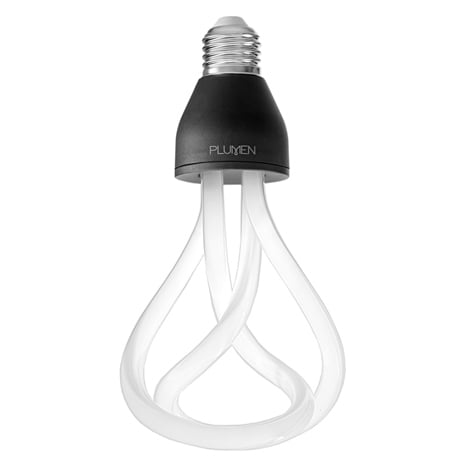
British designers Hulger and Samuel Wilkinson have been awarded the Brit Insurance Design of the Year Award for their Plumen 001 light bulb (above) at a ceremony at the Design Museum in London today. (more…)


 PUU-BO by BIG
PUU-BO by BIG
by: Dezeen, 2011-03-16 11:00:24 UTC
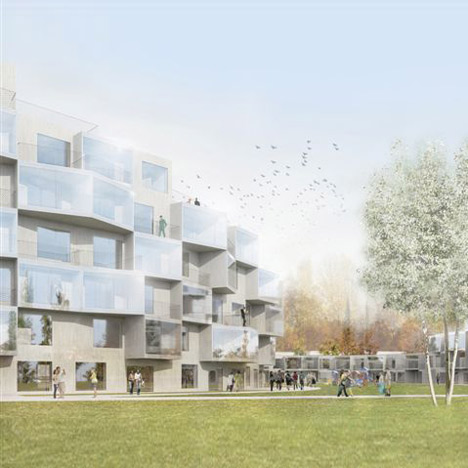
Danish architects Bjarke Ingels Group have won a competition to design multistorey, prefabricated wooden housing for Kouvola, Finland. (more…)


 Shelf System Built From Boxes Makes Moving Easy
Shelf System Built From Boxes Makes Moving Easy
by: TreeHugger Design, 2011-03-16 13:46:53 UTC
 Images credit Brickbox
Images credit Brickbox
When I wrote about
Daniel Gaffner's System 1530 last fall I was intrigued by the design, noting that "when looked at in the framework of a more mobile flexible lifestyle, they become more interesting; the bookshelves can actually become a durable box in which you can move the contents."
In fact, that exact idea has been done, by Spanish designers Antxon Salvador and Antxon Salvador, with their
Brickbox system. The entire bookcase breaks down into a syst...
Read the full story on TreeHugger
WattsClever Charger Recharges Regular Alkaline Batteries
by: Inhabitat , 2011-03-15 21:00:18 UTC

If you’re like us and have a drawer full of drained alkaline batteries that you’ve been hoarding just hoping they’ll somehow be usable again one day, we’ve got good news for you! WattsClever is a new kind of battery charger that allows you to recharge those dead Duracells – yes, even the regular kind that you usually need to take to a Best Buy to recycle. The new device uses a “microprocessor to minutely control the trickle charge so the batteries don’t overheat and die.” Depending on the age and quality of am AA or AAA alkaline battery, it can be recharged anywhere from 10-20 times and each recharge takes around four hours.
+ WattsClever
Via Red Ferret via Dvice
Permalink |
Add to
del.icio.us |
digg
Post tags: alkaline battery charger, Battery Charger, battery recharger, eco design, green design, green gadget, green gadgets, Rechargeable Battery, watts clever, WattsClever
Curving Wood Floors Make Less Waste
by: Eco Geek Latest, 2011-03-15 22:06:10 UTC

Wood floors aren't normally what you would think of as high tech. But a Dutch company called Bolefloor is using computers and CNC production to produce attractive and distinctive wood flooring that maximizes the amount of wood used. By scanning the wood and then using computer algorithms to calculate how best to cut the wood, unique floors with curving patterns can be produced that fits together like a jigsaw puzzle and minimizes waste.
According to the company, the technology used in this process maximizes the yield of usable wood flooring by using "wood scanning systems, tailor-made CAD/CAM developments and innovative optimization algorithms for placement software developed by a Finnish engineering automation company and three software companies in cooperation with the Institute of Cybernetics at Tallinn University of Technology." In addition to determining how to fit together the pieces of wood, the software also takes into account imperfections in the wood near edges or ends, so that the floor will be more durable.
I'm not completely sold on the idea that this is leads to a significant savings of wood. But, for the wood that is used, this aproach should allow some further use of material from each log and the ability to use smaller logs, as well.
Each floor needs to be custom produced using this system, which limits its applicability for off the shelf projects. But, if the need for a repair arises, the fabrication of a replacement piece should be easy to accomplish, using the same file that was used to create the original piece to fabricate a copy.
If you are interested in maximizing production volume, this certainly wouldn't be the way to go. Efficiency is all about straight and regular. But if your definition of sustainability means 'taking care of what you have,' then creating something unique and beautiful that will encourage its owners to care for it and maintain it so it lasts, then this is a wonderful sustainable material.
More example images from the company site.
via: BoingBoing


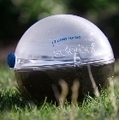
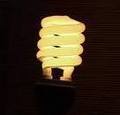
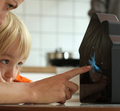

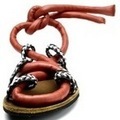

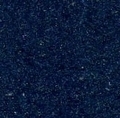


Comments by our Users
Be the first to write a comment for this item.